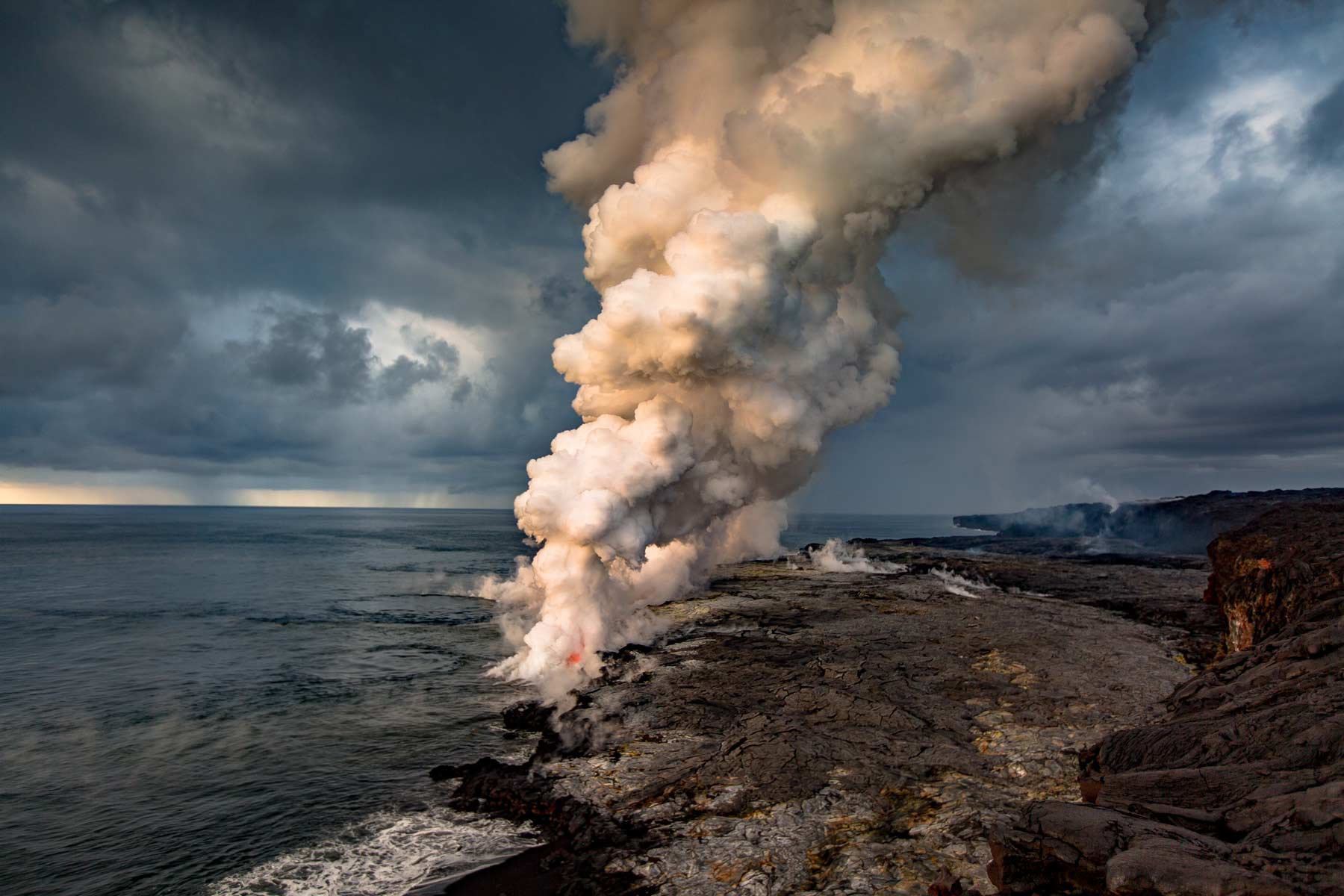
Article Summary: Hawaii Volcanoes National Park Facts
Hawaii Volcanoes National Park Facts! In this article, we provide you with 12 amazing facts about one of America’s most magnificent national parks.
More Than Just Parks is your one-stop-shop when it comes to learning everything you’ll need to know about America’s national parks. We’ve got expert guides, beautiful photos, helpful tips, breathtaking films and so much more.
I’ve been to so many of these amazing places since retiring from teaching in 2018. Did I mention that I taught history? I spent a lifetime teaching about the history behind some of these natural wonders. Then I got to see them firsthand. And now I’m sharing some of the incredible stories about these beautiful places with you. It doesn’t get any better than that!
More Than Just Parks takes a deeper dive with its national park facts. We’ve done our homework so that you’ll get more than you bargained for.
Without further ado, let’s dive in.

Table Of Contents: Hawaii Volcanoes National Park Facts
Hawaii Volcanoes National Park Facts
- Facts About Hawaii Volcanoes National Park
- Hawaii Volcanoes National Park Facts
- Top 5 Hawaii Volcanoes National Park Facts
- 1. Polynesians From The Marquesas Islands Were The First Humans To Visit & Settle The Hawaiian Islands
- 2. The Earliest Settlers Established A Caste System
- 3. Buffalo Soldiers Were Present In What Is Now Hawaii Volcanoes National Park
- 4. Mark Twain Traveled To Kilauea
- 5. Hawaii Volcanoes Features A Historic Landmark Which Is Over 150 Years Old
- Top 10 Hawaii Volcanoes National Park Facts
- Top 12 Hawaii Volcanoes National Park Facts
- Meet The Parks Brothers
- Map Of Hawaii Volcanoes National Park
- List Of Hawaii Volcanoes National Park Facts
- We Hope You’ll Follow Our Journey
- Top 5 Hawaii Volcanoes National Park Facts
Facts About Hawaii Volcanoes National Park
Some Basic Facts About Hawaii Volcanoes National Park
Hawaii Volcanoes National Park is a beautiful and unique park located on the island of Hawaii in the state of Hawaii, in the United States. It covers over 323,000 acres of land and is home to a wide variety of plant and animal life, as well as several unique geological features.
The park is named after its two main attractions, the Kilauea and Mauna Loa Volcanoes, which are both active and have erupted numerous times in recent history. The park is also home to several other volcanic features, including lava tubes, craters, and cinder cones.
The park’s landscape is diverse, with forests of native trees, grasslands, and wetlands. The park is also home to a wide variety of plant and animal life, including native birds, reptiles, and amphibians.
There are many ways to explore and enjoy Hawaii Volcanoes National Park. Visitors can go hiking or biking on the park’s trails, go birdwatching or stargazing in the park’s dark skies, or even take a guided tour of the park’s volcanoes. There are also several campgrounds and lodges located within the park, providing comfortable accommodations for visitors.
Hawaii Volcanoes National Park is a beautiful and unique place, offering visitors the opportunity to experience the beauty and majesty of the natural world in a truly special setting. It is a great destination for outdoor enthusiasts, with plenty of opportunities for hiking, camping, and other outdoor activities.

CHECK OUT: The BEST Hawaii National Parks
Here Are Some Basic Facts About Hawaii Volcanoes National Park
Location: Hawaii
Acreage: Hawaii Volcanoes National Park encompasses 335,259 acres or about 523 square miles.
Visitation: In 2021, Hawaii Volcanoes National Park welcomed 1,262,747 people to the park.
Highest Elevation: 13,681 feet.
Lowest Elevation: The lowest elevation found in Hawaii Volcanoes is 0 feet at the Pacific Ocean.
When Did It Become A National Park? Hawai’i Volcanoes National Park was established in 1916.
Hawaii Volcanoes National Park Facts
Top 5 Hawaii Volcanoes National Park Facts
1. Polynesians From The Marquesas Islands Were The First Humans To Visit & Settle The Hawaiian Islands
We begin our Hawaii Volcanoes National Park Facts with the history of its earliest peoples. As a retired history teacher and lifelong history buff, I always like to begin with an interesting origin story. And, as a part of the Hawaiian Islands, Hawaii Volcanoes, in my opinion, has one of the most interesting.
Polynesians from the Marquesas Islands were the first humans to visit and settle the Hawaiian Islands between 1000-1200 AD.
They were skilled navigators who used observations of natural phenomena such as stars, migratory birds, ocean currents, rainbows, and whales to guide their double-hulled canoes, known as Waʻa, across the 2,000 miles of ocean.
These voyagers brought along many animals and plants to sustain them in their new home, including pigs, dogs, chickens, taro, sweet potato, coconut, banana, sugar cane, and other edible and medicinal plants.
The area now encompassed by Hawaii Volcanoes National Park has been a destination for many people since the Polynesians first arrived in Hawaii over a thousand years ago.
The park is home to two of the most active volcano’s in the world, Kilauea and Mauna Loa, which offer a unique opportunity to witness volcanic activity.

CHECK OUT: 11 AMAZING Acadia National Park Facts
2. The Earliest Settlers Established A Caste System
Another one of the fascinating Hawaii Volcanoes National Park Facts is that, for the inhabitants of the Hawaiian Islands, life was structured around a caste system.
The social heirarchy was delineated into a strict caste system. At the top of this social pyramid were rulers known as Aliʻ i (chiefs.)
On the next rung below the Aliʻ i were the Kahuna (professionals,) who were experts on the spiritual realm, medicines, canoe-building, and rituals.
Below them were the Maka ʻainana (commoners) who farmed, fished, built homes, and paid taxes to the Aliʻi.
The lowest rung were the Kauwa (outcasts and slaves.) Kauwa were villagers who ran afoul of an Aliʻi or kahuna, or were prisoners of war.

CHECK OUT: 25 Bucket List Famous Landmarks In America (MUST-SEE)
3. Buffalo Soldiers Were Present In What Is Now Hawaii Volcanoes National Park
Another one of the fascinating Hawaii Volcanoes National Park Facts is that the Buffalo Soldiers were president in what is not Hawaii Volcanoes National Park.
In 1866, Congress established six all-black regiments (consolidated to four shortly after) to help rebuild the country after the Civil War and to fight on the Western frontier during the Plains Wars.
It was from one of these regiments, the 10th Cavalry, that the nickname Buffalo Soldier was born.
Congress created four military regiments made up of Black troops, the 9th and 10th Cavalry and the 24th and 25th Infantry.
The 25th Infantry, comprised of about 850 enlisted men and officers, arrived in Honolulu on January 14, 1913.
The morning after their arrival they began a two-day, twenty-three-mile march to Schofield Barracks where they were stationed until 1917.
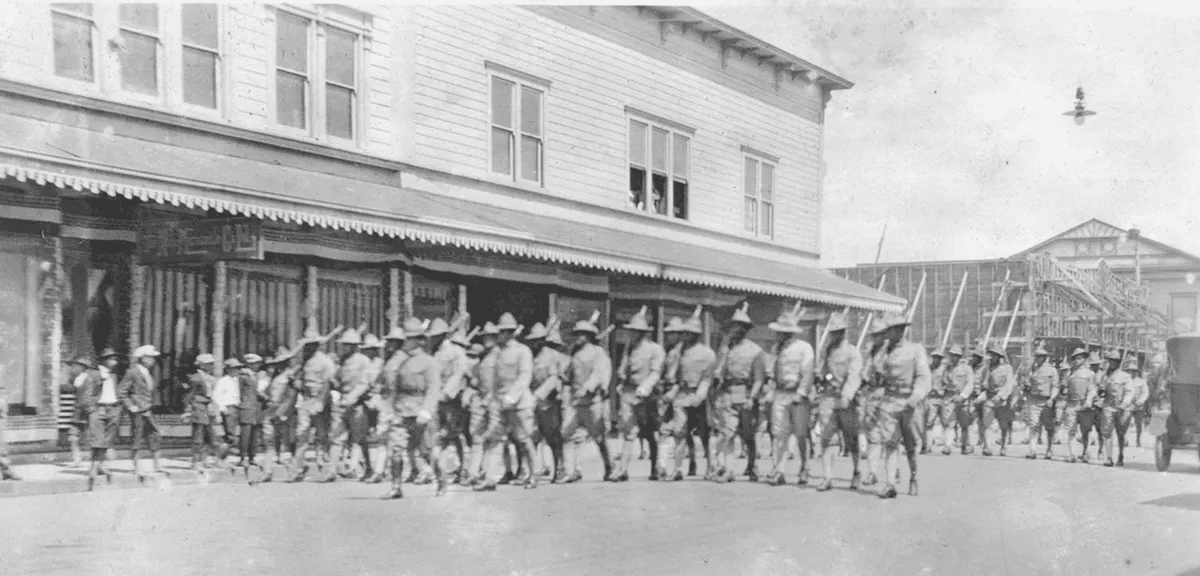
They Did Not Encounter Racial Hatred
According to the National Park Service, the Buffalo Soldiers did not encounter the racial hatred that they had from communities on the mainland.
Positive cross-cultural relationships began as the troops marched in local parades and competed with civilian sports leagues in track and field and baseball.
They were perhaps best known for their baseball prowess. Stories about their winning baseball team, the “Wreckers,” were published in the Honolulu newspapers.
Several team members later joined the Negro League and one player, Wilber “Bullet” Rogan, was inducted into the Baseball Hall of Fame.
To Learn More About The Buffalo Soldiers
From the American Revolution to the present day, African Americans have stepped forward in their nation’s defense.
To learn more about their important contributions, I recommend: Fighting for Uncle Sam: Buffalo Soldiers in the Frontier Army by John P. Langellier.
This concise overview reveals a cast of characters as big as the land they served. Over 150 images painstakingly gathered nearly a half century from public and private collections enhance the written word as windows to the past.
Now, 150 years after Congress authorized blacks to serve in the Regular Army the reader literally can peer into the eyes of formerly enslaved men who bravely bought their freedom on the bloody battlefields of the Civil War, then trekked westward, carried the “Stars and Stripes” to the Caribbean, and pursued Pancho Villa into Mexico with John “Black Jack” Pershing.
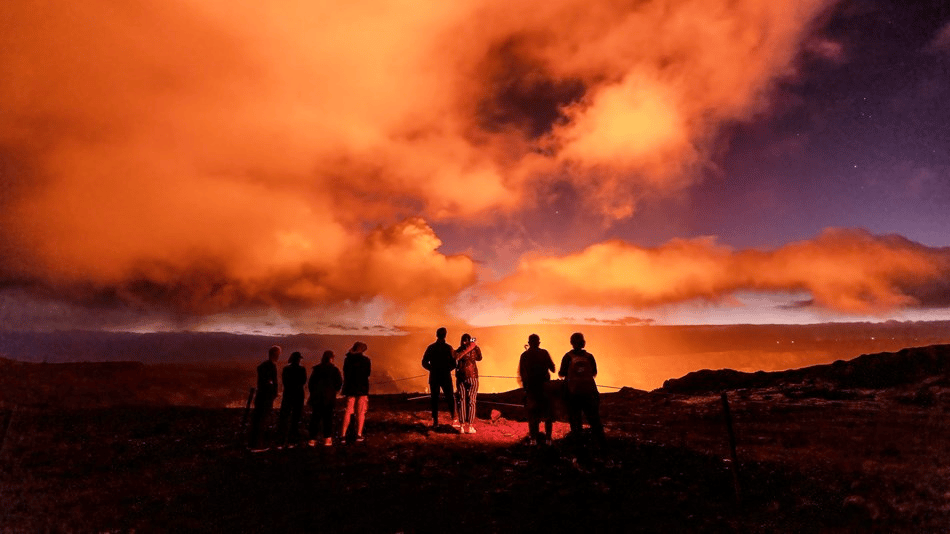
CHECK OUT: 11 AMAZING Facts About Arches National Park
4. Mark Twain Traveled To Kilauea
One of my favorite Hawaii Volcanoes National Parks Facts involves one of America’s greatest authors.
Fifty years before Hawaii Volcanoes National Park was established, author and humorist Mark Twain ventured to the then-erupting summit of Kilauea.
At the time, Twain was on a four month visit to the islands as a correspondent for the Daily Union newspaper of Sacramento.
He traveled to Oahu, Maui, and the island of Hawaii.

His dispatches were published serially in the newspaper throughout that year and later compiled in a volume entitled: Mark Twain’s Letters from Hawaii.
Twain was fascinated by the Kilauea Volcano. Of it he would write:
“It makes three distinct sounds – a rushing, a hissing, and a coughing or puffing sound; and if you stand on the brink and close your eyes it is no trick at all to imagine that you are sweeping down a river on a large low pressure steamer, and that you hear the hissing of the steam about her boilers, the puffing from her escape pipes and the churning rush of the water abaft her wheels. The smell of sulfur is strong, but not unpleasant to a sinner.”
Mark Twain’s Travels On Hawaii
Mark Twain wrote about his experiences at several different locations, including Kealakekua Bay, the “city of refuge” (Puʻuhonua o Hōnaunau), and the small settlement of Waiohinu.
However, he wrote most extensively about his visit to the volcano Kīlauea, which he described as “a scene of wild beauty.”
After a long and rough horseback trek up to the summit from Kaʻū, Twain initially expressed disappointment at the sight of the massive caldera, describing it as “a wide, level, black plain.”
However, as he spent more time at the volcano, he began to appreciate the true scale of the caldera, noting that “the place looked a little larger and a little deeper every five minutes, by the watch.”
He also observed a house perched on the edge of the caldera, which looked like “a martin box under the eaves of a cathedral.”
During his stay at Kīlauea, Twain stayed at the Volcano House, a hotel that he described as “neat, roomy, well furnished, and well kept” and was surprised to find such a good hotel in such an remote location.
CHECK OUT: 12 AMAZING Facts About Big Bend National Park
5. Hawaii Volcanoes Features A Historic Landmark Which Is Over 150 Years Old
If you enjoy historic landmarks as much as I do then this next Hawaii Volcanoes National Park Fact is one you will find fascinating.
The Volcano House in Hawaii Volcanoes National Park has been there since 1846 when Benjamin Pitman constructed a four walled thatched shelter “in the native style.”
Today it’s a historical retreat with 33 guest rooms, 10 cabins and 16 campsites.
The hotel is actually on the edge of an active volcano which makes it an exciting place to visit any time you go.
It also features an incredible timeline as amazing place underwent a metamorphosis from Pitman’s simple structure to the grand place it is today.
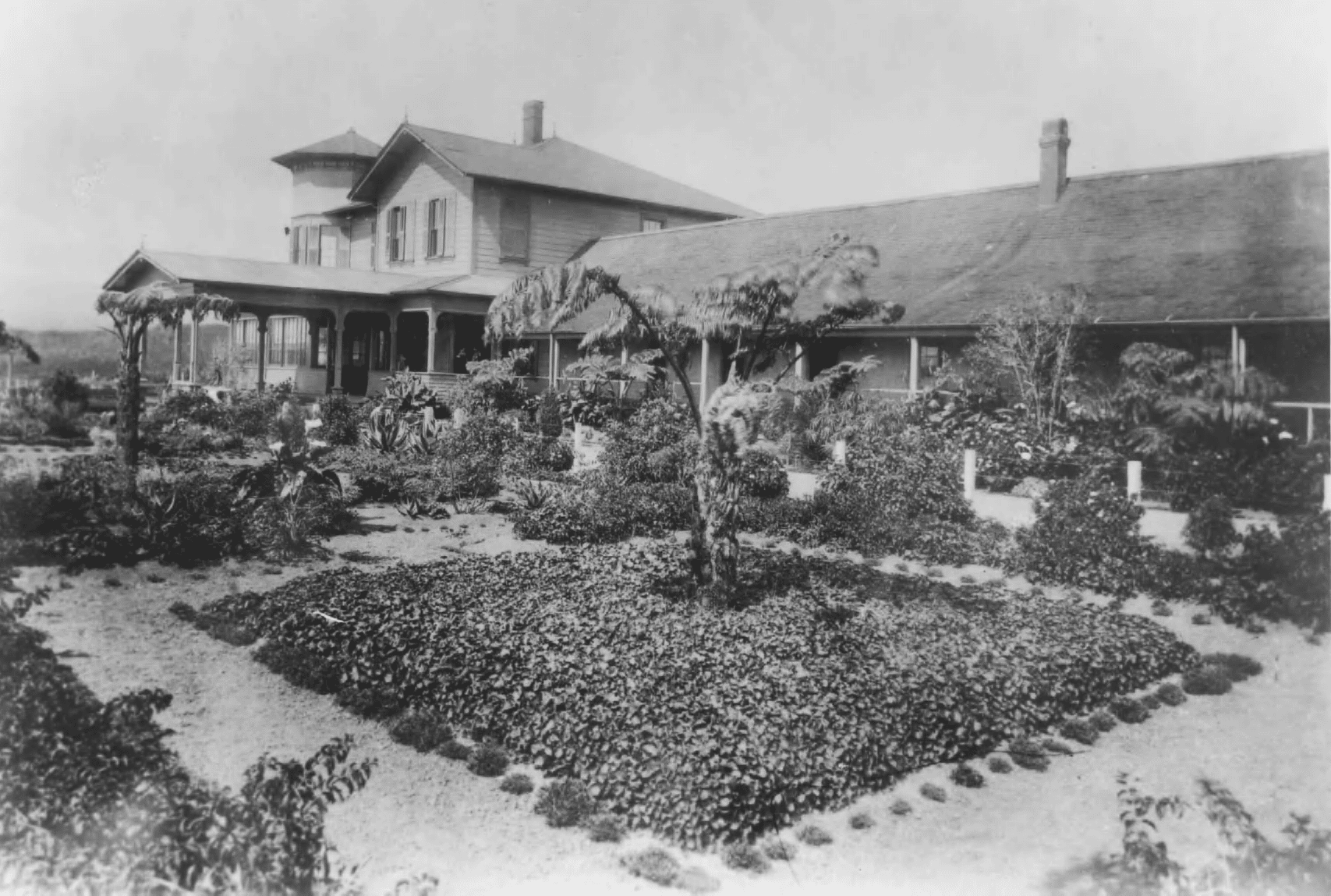
Volcano House Over The Years
According to the National Park Service, Volcano House went through four major renovations.
1877 Volcano House: William Lentz, a carpenter from Baltimore, built a more permanent western-style Volcano House hotel in 1877 located where koa trees near the pā hula (hula platform) is now.
1891 Victorian Addition: The hotel had traded hands again, this time to Lorrin A. Thurston. He increased capacity of the hotel with a 2-story Victorian-style addition to the Kaʻū side of the building.
1921 Renovations: The 1877 section of the building was removed from the 1891 Victorian addition and rolled back to where it currently houses the Volcano Art Center.
A massive two-story wing was then added to the Victorian addition, bringing the number of rooms from 25 to 104. This grand hotel operated under the Interisland Steamship Company until 1932.
1941 New Volcano House: On February 7, 1940 the Volcano House burnt to the ground. George Lycurgus began the process to build a new hotel.
He commissioned Maui-born architect Charles W. Dickey to pen the design. On November 8, 1941, the new hotel opened for business.
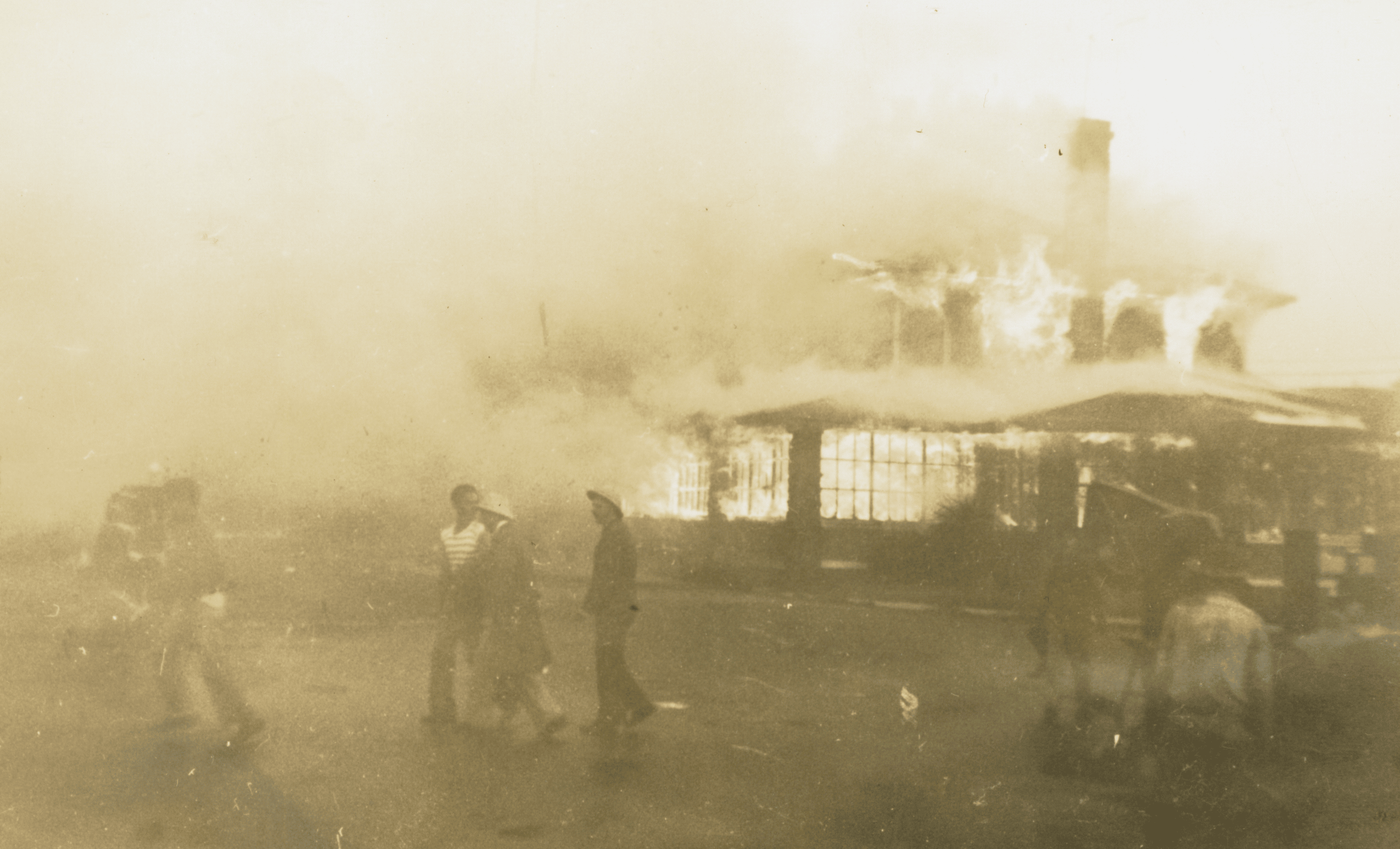
This hotel, located across Crater Rim Drive at the caldera’s edge, hosted a fair share of significant guests.
The list of names included Dwight D. Eisenhower, Harry S. Truman, Dr. Charles W. Mayo, John F. Kennedy and Richard M. Nixon as well as many others. (Source: NPS)
CHECK OUT: 14 AMAZING Facts About Biscayne National Park
Top 10 Hawaii Volcanoes National Park Facts
6. Hawaii Volcanoes National Park is Home to the Largest Active Volcano On Earth
One of the most interesting Hawaii Volcanoes National Parks Facts involves volcanoes. Or, to be more specific, it involves one volcano in particular.
Mauna Loa is the largest active volcano on the planet. Its name means “long mountain” in Hawaiian.
As a matter of fact, as I write this article for More Than Just Parks, Mauna Loa erupted again for the first time in 38 years.
At just 21 miles apart, Mauna Loa and Kilauea have not erupted together since 1984, when Mauna Loa last erupted.
Fountains of lava as tall as 200 feet burst from Mauna Loa, the Geological Survey said.
The eruption was concentrated in Mauna Loa’s Northeast Rift Zone, where lava is flowing from at least one split in the volcano, the geological survey said. (Source: CNN)

Mauna Loa Is A Shield Volcano
Mauna Loa is what geologists refer to as a shield volcano in its shape— signified by broad, rounded slopes.
The volcano makes up roughly 51% of Hawaii Island and stands 13,681 feet above sea level.
More impressive, however, it rises an astonishing 30,000 feet from the bottom of the sea, a greater height than Mount Everest. The ocean floor actually bends under the weight of this mammoth mountain.
By itself, the land mass that Mauna Loa encompasses is almost equal twice all of the other Hawaiian islands combined.
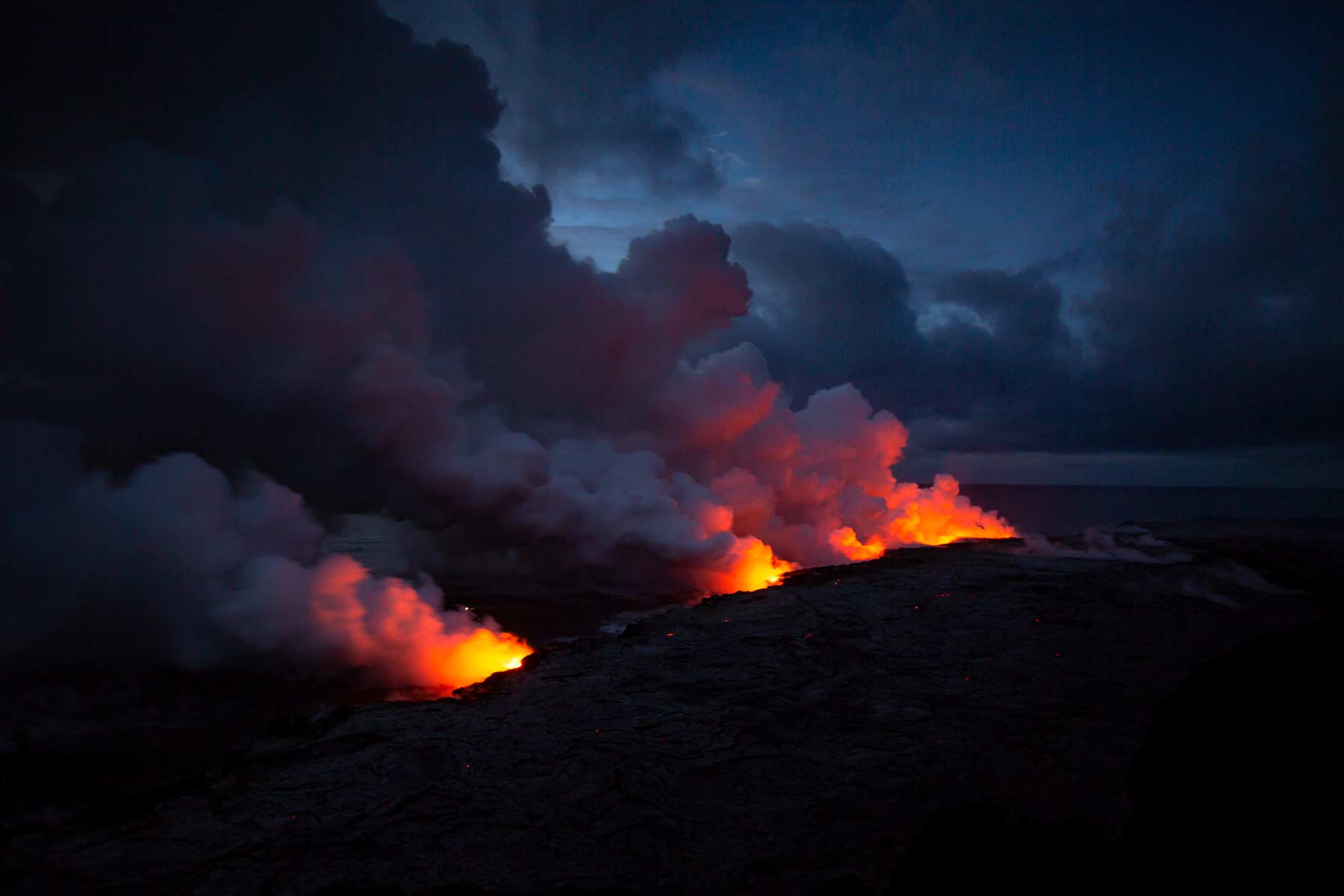
CHECK OUT: 12 SURPRISING Channel Islands National Park Facts
7. Hawaii Volcanoes Includes An “Island Of The Giants”
Just when you thought we couldn’t come up with any more unbelievable Hawaii Volcanoes National Park Facts we’ve come up with another one.
You know that the two most active volcanoes on the Big Island of Hawaii are Kilauea & Mauna Loa.
But did you know that there are three other volcanoes which make up the Island of Hawaii?
From oldest to youngest their names are: Kohala, Mauna Kea, Hualalai, Mauna Loa and Kilauea.
IF you’re planning a visit then the good news is that these three other volcanoes (Kohala, Mauna Kea & Hualalai) are much older and less likely to erupt than their younger siblings to the south.
Mauna Kea, which last erupted an estimated 4,500 years ago, is likely to erupt again, although its periods of quiet are much longer. Kohala, the oldest volcano on the island, has concluded its period of eruptive activity.
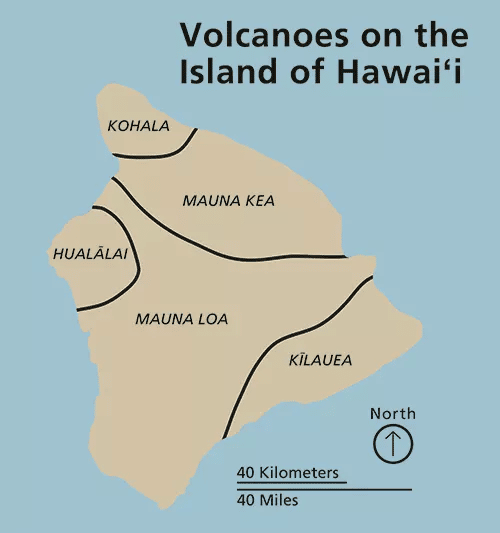
CHECK OUT: 10 FASCINATING Denali National Park Facts
8. Hawaii Volcanoes National Park Is A UNESCO World Heritage Site
Another fascinating Hawaii Volcanoes National Park Fact is that the park is a UNESCO World Heritage Site.
What does it mean to be a UNESCO World Heritage Site? World Heritage Sites are designated by UNESCO (United Nations Educational, Scientific and Cultural Organization) for having cultural, historical, scientific or other form of significance.
World Heritage is the designation for places on Earth that are of outstanding universal value to humanity and as such, have been inscribed on the World Heritage List to be protected for future generations to appreciate and enjoy.
Hawaii Volcanoes National Park preserves the intimate connection between the natural history of the region and Native Hawaiian culture –- a culture that to this day reveres the island volcanoes as sacred places.

CHECK OUT: 11 SURPRISING Everglades National Parks Facts
9. The Park Is Also An International Biosphere
In 1980, the United Nations Educational, Scientific, and Cultural organization (UNESCO) named Hawai’i Volcanoes National Park an International Biosphere Reserve because of its outstanding scenic and scientific values.
What is an International Biosphere?
Biosphere reserves are ‘learning places for sustainable development’. They are sites for testing interdisciplinary approaches to understanding and managing changes and interactions between social and ecological systems, including conflict prevention and management of biodiversity.
They are places that provide local solutions to global challenges. Biosphere reserves include terrestrial, marine and coastal ecosystems. Each site promotes solutions reconciling the conservation of biodiversity with its sustainable use. (Source: UNESCO)
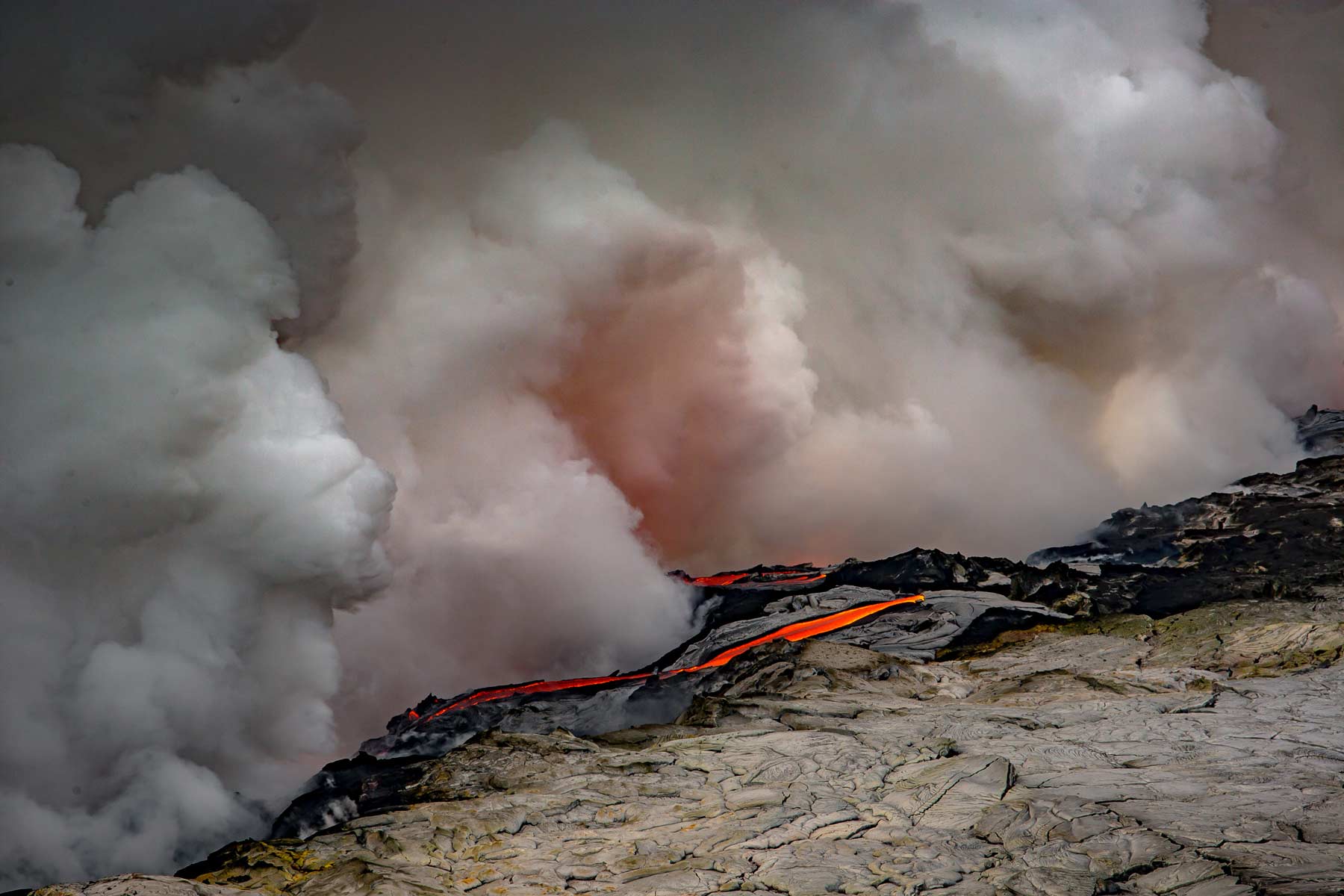
CHECK OUT: 15 AMAZING Facts About Grand Teton National Park
10. Exploring the Park By Car Is Easy
Now if you’re planning a visit, but you’re not someone who likes to do a lot of walking then you’ll be thrilled by the next one of our Hawaii Volcanoes National Park Facts. Exploring the park by car is actually quite easy.
There are different ways to see the attractions throughout the park. You can take a guided volcano tour or drive through on your own.
If you prefer an excursion through the park via car, however, there are two popular drives to choose from:
- The Crater Rim Drive Tour takes you to the Kilauea Visitor Center, Steam Vents and Sulphur Banks, the Kilauea Iki Overlook, Pu’u Pua’i Overlook, the Devastation Trail, and the Keanokako’i Crater.
- The Chain of Craters Road winds visitors through the park. You will hit stops such as the Lua Manu Crater, Pauahi Crater, Mauna Ulu, Kealakomo Lookout, and the Pu’u Loa Petroglyphs.
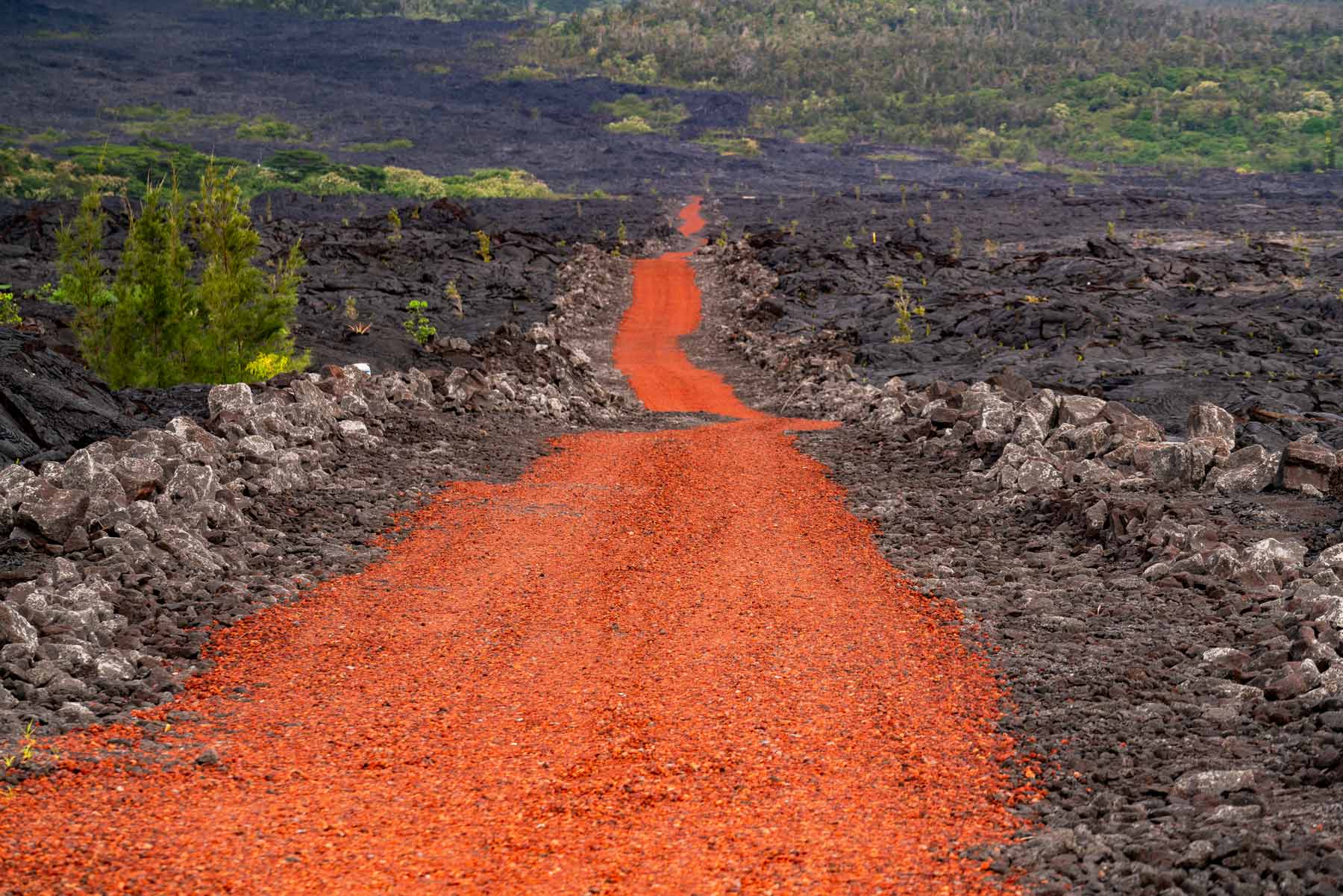
You Can Also Walk The Trails
If you prefer traveling by foot then there are some wonderful walking trails.
One of my favorites is the Crater Rim Trail.
It’s an easy hike and it traverses the edge of the Kilauea summit Caldera from Uekahuna to just past Keanakakoʻi Crater.
Along the way, you’ll see some breathtaking scenery.
CHECK OUT: 15 AMAZING Facts About Great Smoky Mountains National Park
Top 12 Hawaii Volcanoes National Park Facts
11. Hawaii Volcanoes Features Some Amazing Petroglyphs
Another Hawaii Volcanoes National Parks Fact has to do with the Puʻuloa Petroglyphs.
These amazing etchings document the life and culture of the Native Hawaiian people.
The poho (cup-like depressions) cradle the piko (umbilical cord) of their children. It brought hopes of receiving the blessings of a long and prosperous life.
Now be forewarned that this trip entails a moderate hike of approximately 1.5 miles round trip. You should plan on approximately 1 to 1.5 hours.
It’s well worth it, however, as this beautiful coastal trail traverses a 500-550 year old lava field to one of the most extensive petroglyph fields in Hawaii.
This incredible site has approximately 23,000 petroglyphs. Many of these are viewable at a boardwalk constructed just for this purpose.
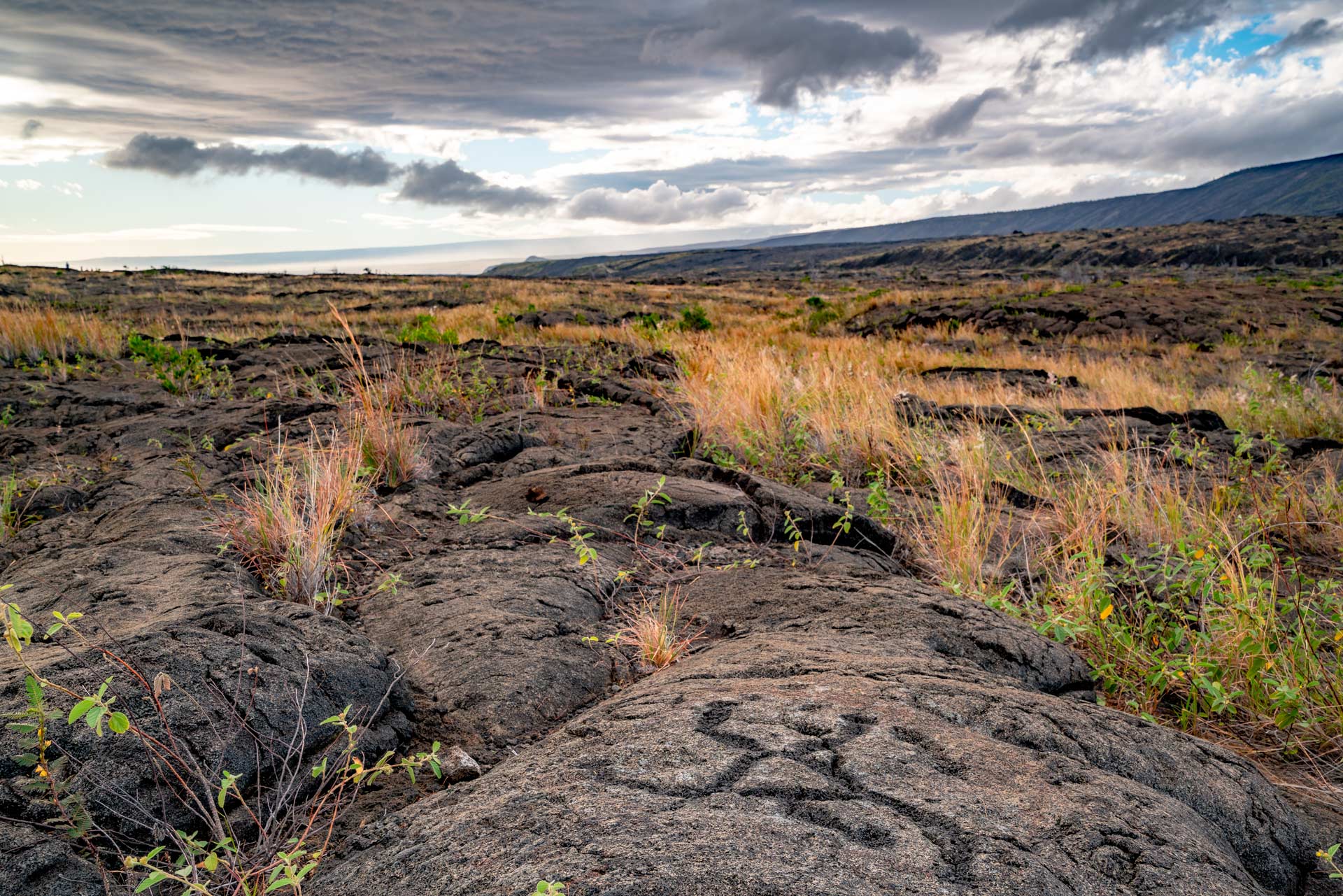
CHECK OUT: 10 FASCINATING Facts About Guadalupe Mountains National Park
12. Hawaii Volcanoes Features Amazing Lava Tubes
One of my favorite Hawaii Volcanoes National Park Facts has to do with the amazing lava tubes which visitors can explore.
A lava tube, or pyroduct, is a natural conduit formed by flowing lava from a volcanic vent that moves beneath the hardened surface of a lava flow. If lava in the tube empties, it will leave a cave.
When the lava flow stops or gets diverted, the tube becomes an empty cave.
These lava tubes can be found in Hawaiian Volcanoes National Park, home of the Kilauea and Mauna Loa volcanoes, and they offer a unique opportunity to witness volcanic activity.
When active, lava travels through these tubes at temperatures that exceed 2,000º F (1090º C). The intense heat can cause winds of superheated fumes to blast through the tunnel, but the only sound may be the constant soft hiss of the relentless flow.
These tubes are not only geological wonders but also provide habitat for unique ecosystem of troglobites, animals specifically adapted to live in the dark and isolated environment.
Distinct species of crickets and spiders develop alongside special microbial colonies that can only be found in these lava tubes.
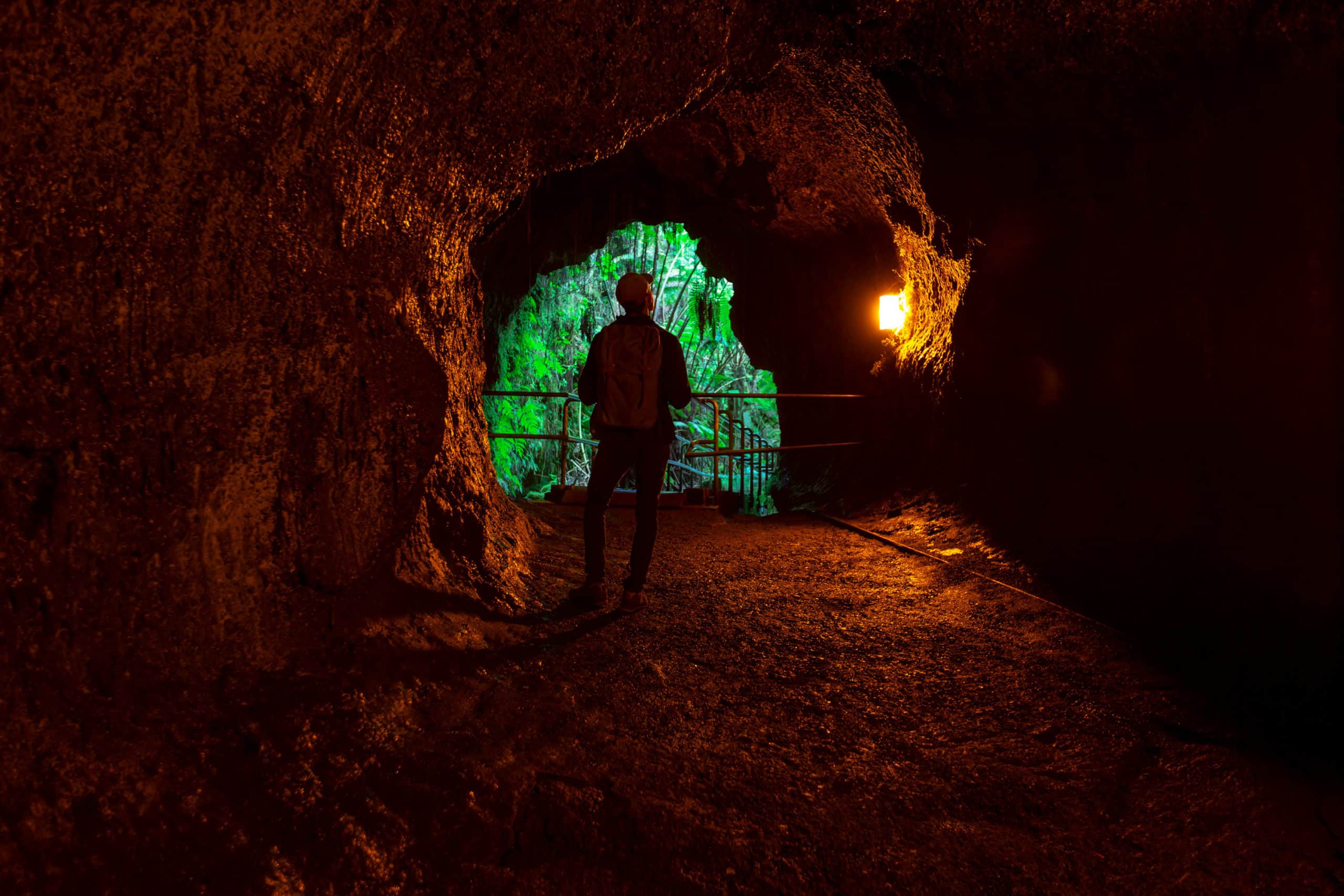
Thurston Lava Tube
One of the most amazing lava tubes can be found in Haleakala. It’s the Thurston Lava Tube.
The Thurston Lava Tube, a 450-foot tunnel east of the caldera, was formed when a lava stream’s outer crust hardened while the molten lava continued its flow.
The lava tube is named for Lorrin Thurston, a local newspaper publisher who discovered the cave in 1913. Thurston was also an advocate for the creation of the national park.
When this lava tube was discovered, the roof of the tube was covered with lava drippings.
The lava tube can be accessed by a short day hike. Alternate parking for Nahuku is at Kilauea Iki Overlook, a half-mile distance.
CHECK OUT: ALL 63 US NATIONAL PARKS RANKED BY EXPERTS
Check Out Our Hawai’i Volcanoes National Park 8K Film
HAWAI’I VOLCANOES 8K is the culmination of several weeks spent filming in the rugged volcanic landscapes of Hawai’i Volcanoes National Park.
Situated on the island of Hawaii in the heart of the remote south pacific, Hawai’i Volcanoes National Park boasts an awe-inspiring array of massive mountains, rare wildlife, and fiery volcanoes. Journey with More Than Just Parks as we discover an ever-growing land shaped by fire.
This is Hawai’i Volcanoes. Filmed primarily in stunning UHD 8K. Hawai’i Volcanoes National Park is an incredible place featuring the most active volcano in the world. Kiluea is constantly in a state of eruption.
This film was shot before much of the more recent explosive activity occurred and features some locations that have been significantly altered.
Why Trust Us About Hawaii Volcanoes National Park?
We’re Jim Pattiz and Will Pattiz, collectively known as the Pattiz Brothers (and sometimes the Parks Brothers) and we absolutely LOVE the national parks.
You should probably know that we don’t just make this stuff up out of thin air. We’ve spent our entire adult lives exploring and filming America’s national parks and public lands.
We’ve worked with the National Park Service, the Department of Interior, USDA, and the U.S. Forest Service for years creating films on important places and issues. Our work has been featured in leading publications all over the world and even some people outside of our immediate family call us experts on the national parks.

Meet The Parks Brothers
Map Of Hawaii Volcanoes National Park
List Of Hawaii Volcanoes National Park Facts
- Polynesians From The Marquesas Islands Were The First Humans To Visit & Settle The Hawaiian Islands
- The Earliest Settlers Established A Caste System
- Buffalo Soldiers Were Present In What Is Now Hawaii Volcanoes National Park
- Mark Twain Traveled To Kilauea
- Hawaii Volcanoes Features A Historic Landmark Which Is Over 150 Years Old
- The Park Features The Largest Active Volcano On Earth
- Hawaii Volcanoes Includes An “Island Of The Giants”
- Hawaii Volcanoes National Park Is A UNESCO World Heritage Site
- The Park Is Also An International Biosphere
- Exploring the Park By Car Is Easy
- Hawaii Volcanoes Features Some Amazing Petroglyphs
- Hawaii Volcanoes Features Amazing Lava Tubes
We Hope You’ll Follow Our Journey

Our goal here at More Than Just Parks is to share the beauty of America’s national parks and public lands through stunning short films in an effort to get Americans and the world to see the true value in land conservation.
We hope you’ll follow our journey through the parks and help us to keep them the incredible places that they are. If you’re interested joining the adventure, sign up below!
Helpful Articles
Hawaii National Parks: The Best Hawaii National Parks
Volcanoes NP Guide: Hawaii Volcanoes – Expert Guide
Best Things To Do Hawaii Volcanoes: 15 Best Things To Do At Hawaii Volcanoes National Park
Petroglyphs: Pu`u Loa Petroglyphs – Hawai’i Volcanoes National Park
Pipiwai Trail: PIPIWAI TRAIL – Bamboo Forest, Banyan Tree, & Waimoku Falls Hike
Historic Sites: 5 MUST-SEE Historic Sites In Hawaii
National Parks: All 63 National Parks Ranked By Experts
National Monuments: Ultimate List Of National Monuments
Landmarks: 25 Famous Bucket List Landmarks In America (MUST-SEE)
Park Rangers: A Brief (& Informative) History Of America’s National Park Rangers
Gifts: 50 BEST National Park Gifts For The National Park Fan In Your Life
Books: 45 BEST National Parks Books
Revolutionary War Sites: 10 BEST Revolutionary War Sites In America
Civil War Sites: 10 BEST Civil War Sites In America
Civil Rights Sites: 10 BEST Civil Rights Sites In America
National Parks In Movies: Look Familiar? 25+ CLASSIC Movies Filmed In The National Parks
Television Shows: Look Familiar? 10+ CLASSIC Television Shows Filmed In The National Parks
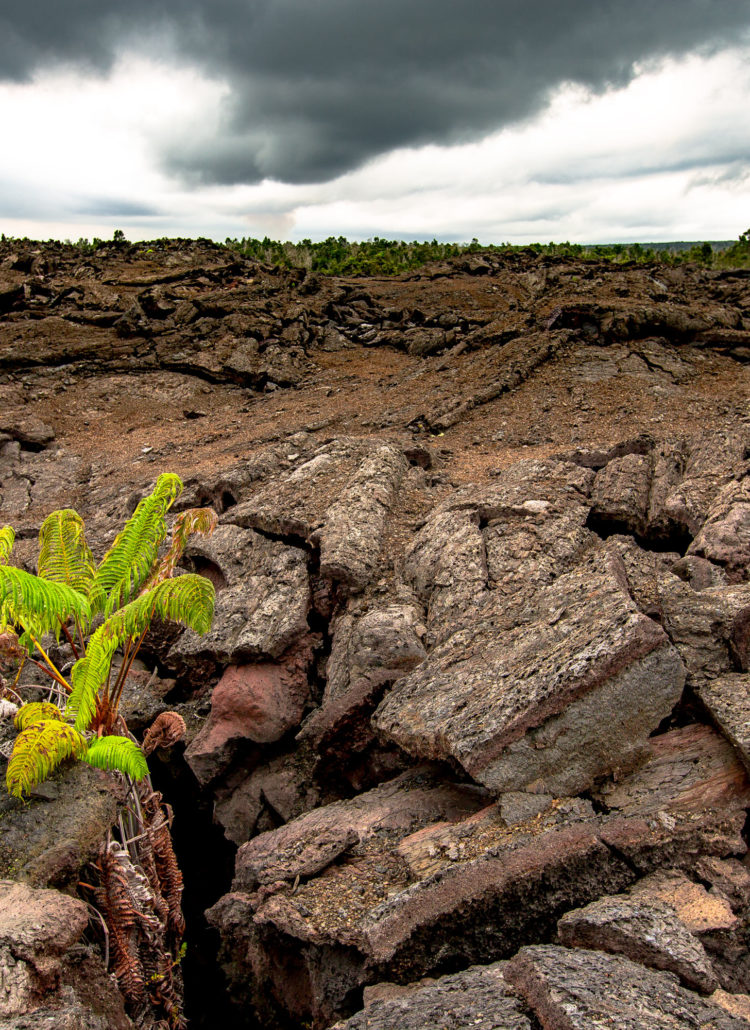
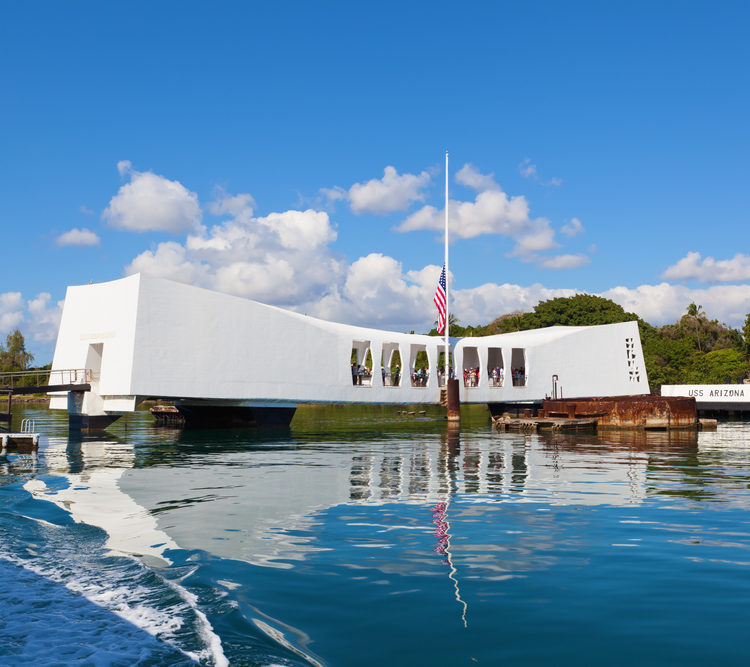
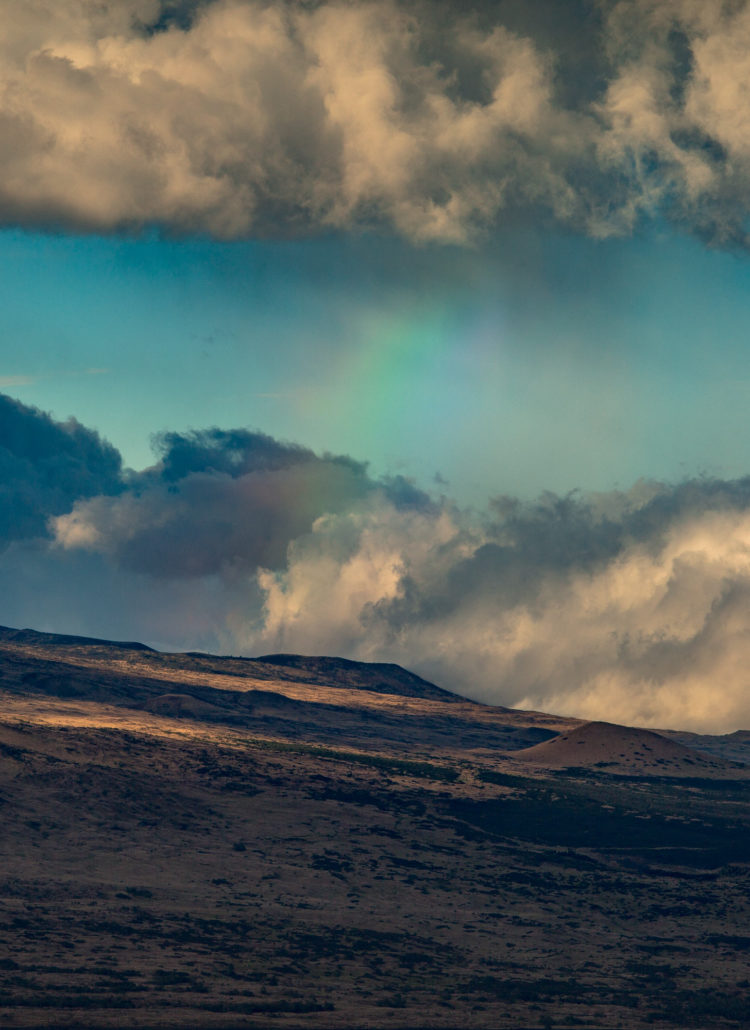
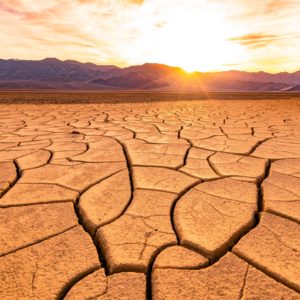

Leave a Reply